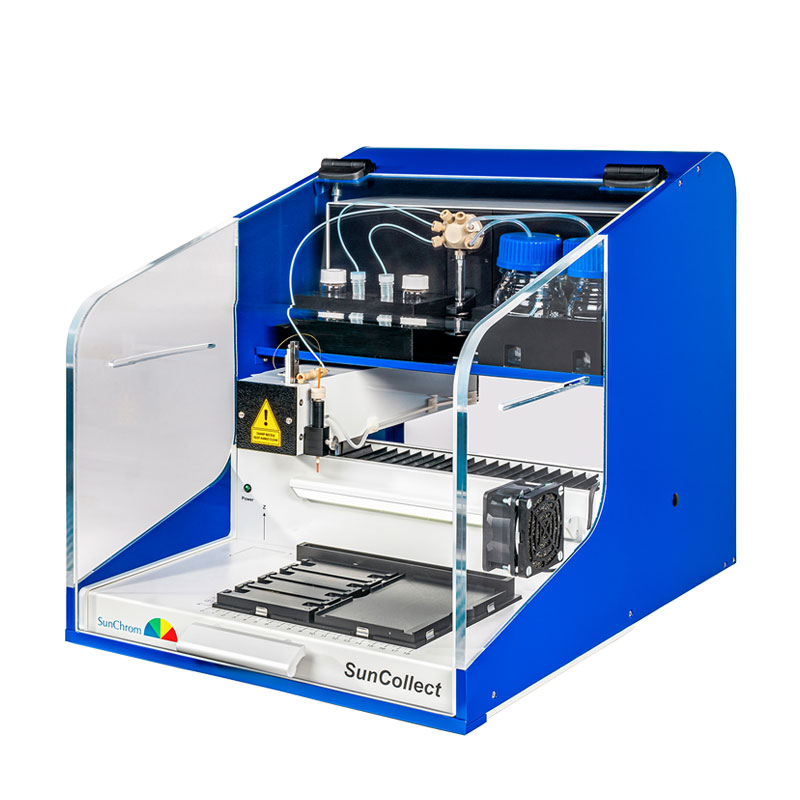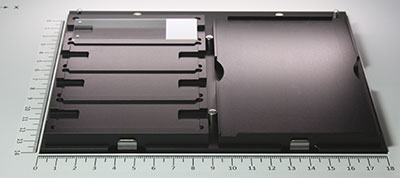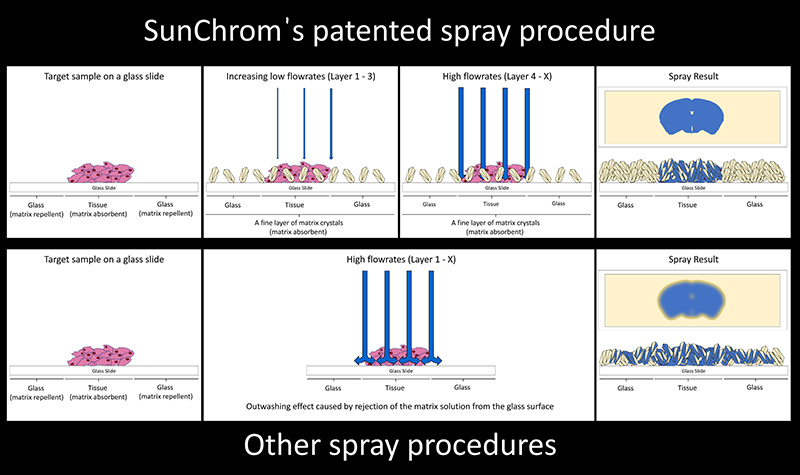Sprayer for MALDI Imaging

SunCollect MALDI Sprayer
Tissue Preparation for Imaging MALDI
Tissue samples can be easily prepared for MALDI imaging using the SunCollect. The sprayer can handle fresh-frozen or FFPE tissue sections. Enzymes such as trypsin can be applied to the tissue for in situ digestion.
The SunCollect sprayer offers the following key features:
- Automated delivery of matrix, enzyme or derivatization solutions
- 6 port PEEK valve with low dead-volume to minimise liquid usage
- Automatic self-cleaning function at end of matrix application
- 100 % biocompatible
- Compact unit 36 x 49 x 40 cm (w,d,h)
- Preprogrammed spray protocols
- Up to 8 sample slides can be sprayed simultaneously
- Easy to use software

Groundbreaking tissue coverage
The SunCollect system uses an optimized spray generator to produce extremely small matrix droplet sizes. It ‘atomizes’ the matrix solution with its patented spray nozzle using compressed air or nitrogen gas. SunCollect enables the user to produce by far the finest matrix crystals worldwide in combination with a very high homogeneity. For α-Cyano-4-hydroxycinnamic acid (CHCA), crystal sizes of 100 – 200 nm can be achieved.

Furthermore, the SunCollect System is extremely fast: To cover a standard ITO glass slide (75 × 25 mm) it takes about 50 seconds per layer. The patented multi-layer-technique allows additionally a very high efficiency for analyte extraction while keeping the spatial resolution. Besides this special sample preparation technique SunCollect sprays matrix or expensive enzyme solutions extremely economical. Less than 200 µL enzyme solution is needed for a standard microscope or ITO glass slide for absolutely homogeneous 10 layers. This procedure is crucial for a successful sample preparation for MALDI MS.
Patented spray procedure SunChrom’s newly patented spray procedure starts with a very low flow rate for matrix/solvent delivery and increases the flow rate within the first three layers. By this method the surface of the glass becomes porous, similar like tissue surface. It prevents the delocalization of analytes out of the tissue to the glass surface (no wash-out).







